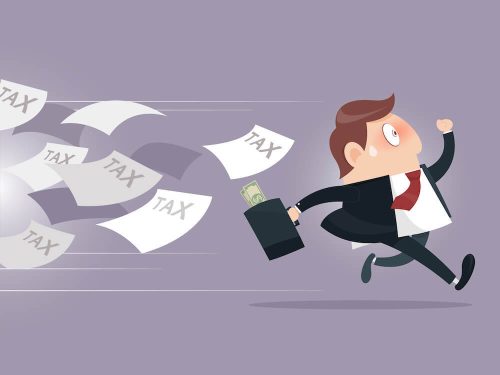What is the mission of the Washington, D.C.-based Tax Foundation? Even a quick review of the Tax Foundation’s output makes it perfectly plain: to help make average Americans see the richest among us as terribly overtaxed.
Hardly a Tax Foundation report goes by without one iteration or another of this overtaxed claim. Just last fall, the Tax Foundation produced a study that had billionaire Warren Buffett paying taxes at a rate of over 1,000 percent.
A few years back, early in the Biden years, I deconstructed another Tax Foundation claim, that the passage of tax changes the Biden White House was then pushing would leave the estate of a hypothetical taxpayer worth $100 million facing a tax rate of 61.1 percent. My response detailed the absurdity of that claim.
But what if that 61.1 percent had turned out to be an appropriate calculation? Would that 61.1 percent rate have really amounted to an oppressive tax levy? The Tax Foundation sure wants people to think so.
So let’s take a closer look at the Tax Foundation’s mythical ultra-rich taxpayer and let’s tweak the Tax Foundation’s hypothetical facts to make them just realistic enough to work with.
Suppose we assume our mythical taxpayer originally paid $1 million for the asset that ended up worth $100 million at her death 25 years later. That would leave $99 million of taxable gain. And a $1 million asset appreciating to $100 million after 25 years would have an average annual rate of return of 20.23 percent, a realistic rate for the sort of “home run investments” the ultra-rich actually make.
Let’s also ignore the exemption from federal estate tax — currently $14 million per individual, $28 million for a married couple — and treat the entire amount remaining from the $100 million after payment of income tax as subject to a 40 percent estate tax.
Applying the Tax Foundation’s methodology from that point, we would end up with a total effective tax rate just shy of 65.8 percent, nearly five percentage points higher than the 61.1 percent rate that had our friends at the Tax Foundation clutching their pearls. Wow! Sounds stunningly oppressive, huh?
Actually, no. The reason: The Tax Foundation’s presentation deceptively ignores the tax reduction magic of buy-hold for decades-sell, the tax loophole that causes the effective annual tax rate on the growth in the value of investments to decline as the rate of return and length of the holding period increase.
Our mythical taxpayer would be the quintessential beneficiary of this tax reduction magic. She would see her investment gains compound for 25 years without paying a nickel in income tax, all while her asset’s value was increasing by 20.23 percent per year.
The Tax Foundation, you see, makes quite the fuss over the one-time tax a mythical taxpayer’s estate would pay in the year of her death, but conveniently forgets about the taxpayer’s zero tax rate for the previous 25 years running.
That focus on a once-in-25-years tax payment ignores the full picture. To see that more clearly, consider the impact that a 65.8 percent tax would have on a mythical taxpayer’s overall investment return. At an after-tax annual rate of return of 15.18 percent, an asset with an initial value of $1 million will be worth $34.2 million in 25 years, exactly the amount left of the mythical taxpayer’s $100 million after her estate’s one-time tax payment of $65.8 million. That would be a 25 percent reduction in the pre-tax annual rate of return of 20.23 percent.
In other words, that supposedly onerous 65.8 percent tax at the time of the Tax Foundation’s mythical taxpayer’s death translates to an effective annual tax rate of just 25 percent.
Had the Tax Foundation’s mythical taxpayer been required to pay federal tax, covering both current income tax and future estate tax, at an annual rate of 25 percent on the growth in her investment’s value, and had she sold off just enough of the investment each year to pay the tax, her estate would be left with the same amount in the year of her death as it would have after paying the supposedly oppressive income and estate tax due under the terms of the Biden budget.
So, to review, the Tax Foundation concocted a hypothetical situation to show the proposals in Biden’s budget rated as extreme and oppressive. But even though that hypothetical is so concocted it couldn’t be found in the real-life situations of even the richest Americans, the supposedly oppressive one-time tax rate paid by the Tax Foundation’s mythical taxpayer translates to a modest effective annual tax rate of just 25 percent.
The bottom line: Once we take into account the impact of buy-hold for decades-sell, the tales of horror that apologists for the ultra-rich concoct to advocate against any meaningful tax increases on their deep-pocketed friends turn out to be not at all horrible.
Unless you’re horrified at the prospect of a reformed tax system that prevents the already obscene concentration of American wealth from becoming even worse.
Check the links below for the first five installments in this “Buy-Hold for Decades-Sell” series.
Heard About Buy-Borrow-Die? Meet Buy-Hold for Decades-Sell
What Income Tax Rate Are Rich investors Really Paying on Their Capital Gains?
‘Wherewithal to Pay’: Deconstructing the Canard That Perpetuates Our Worst Tax Loophole
